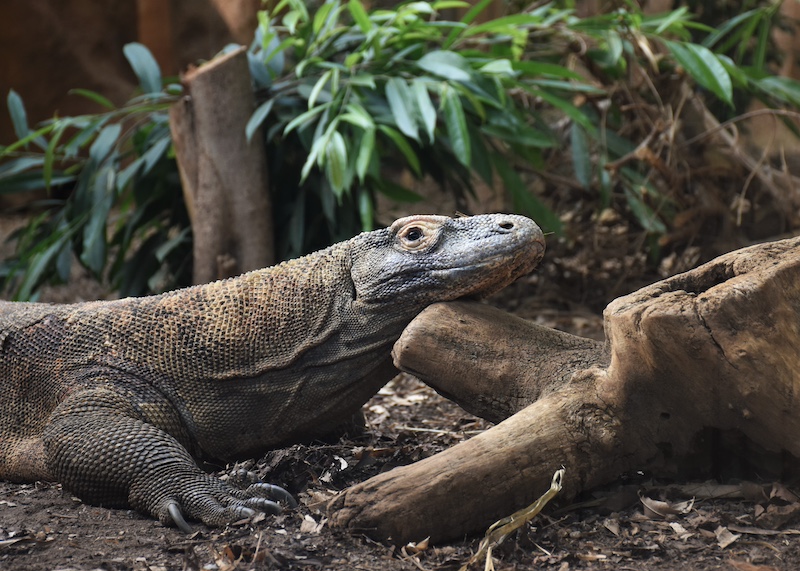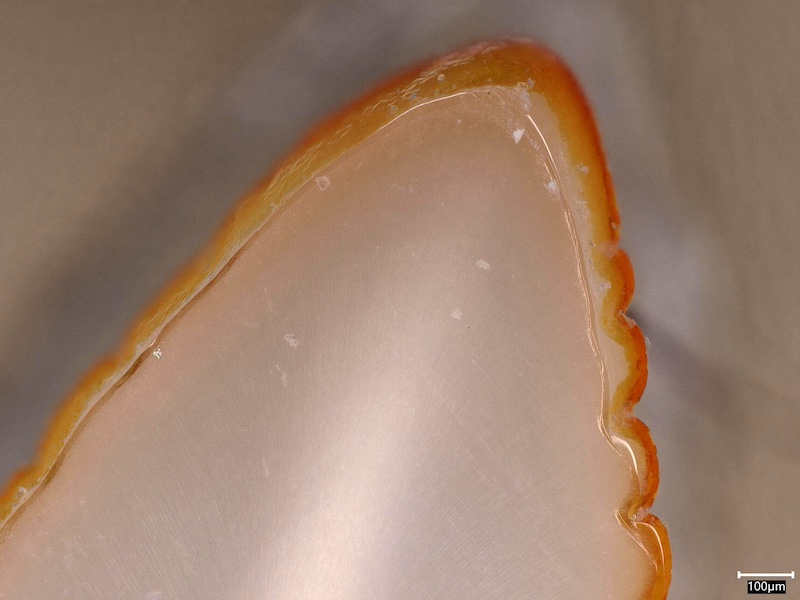Komodo dragons have iron-coated teeth
Scientists have discovered that the curved serrated teeth of Komodo dragons are kept sharp by a coating of iron, and have an orange stain from the iron.
The post Komodo dragons have iron-coated teeth first appeared on EarthSky.

Komodo dragons have sharp, curved, serrated teeth they use to tear apart the flesh of their prey. How do their teeth stand up to such heavy use? On July 24, 2024, scientists said they’ve discovered the Komodo dragon’s teeth stay sharp thanks to a coat of iron. This new finding may also someday shed light on the feeding characteristics of carnivorous dinosaurs, like Tyrannosaurus rex, which had similar teeth structures.
The scientists published these findings in the peer-reviewed journal Nature Ecology & Evolution on July 24, 2024.
Komodo dragons, the largest lizards alive today
The Komodo dragon (Varanus komodoensis) is the largest existing lizard species. Males measure around 8.5 feet (2.6 m) in length, while females tend to be a foot shorter. On average, they weight about 150 pounds (70 kg). Their powerful jaws hold sharp, curved, serrated teeth, suited for tearing off large pieces of flesh from their prey. And they use their forked tongue to smell and taste their surroundings.
These creatures live only on a few islands in Indonesia. Komodo is one of those islands, after which the lizard is named. In their natural habitat, Komodo dragons are the largest predator, hunting birds, other reptiles and mammals, such as deer and water buffalo. They are also carrion feeders.
The International Union for Conservation of Nature (IUCN) classifies Komodo dragons as endangered. As a result, the Indonesian government has set aside protected areas for these giant lizards, including Komodo National Park.
Teeth edges coated in iron
The researchers ran imaging and chemical analysis on Komodo dragon teeth kept at museums. They also studied teeth from a Komodo dragon that once lived at the London Zoo (that had to be euthanized due to severe illness).
Many reptiles have iron in their teeth, the scientists said. However, they discovered something unique about how that iron is distributed in Komodo dragon teeth. They found iron in the teeth enamel was concentrated in a thin layer at the teeth serrations and tips. In effect, the iron acted as a protective layer to keep the teeth razor-sharp. In addition, scientists could see the iron as orange-colored stains along the teeth edges.


What Komodo dragons tell us about carnivorous dinosaurs
Aaron LeBlanc, of King’s College London, is the lead author of the paper. He said:
Komodo dragons have curved, serrated teeth to rip and tear their prey just like those of meat-eating dinosaurs.
We want to use this similarity to learn more about how carnivorous dinosaurs might have eaten and if they used iron in their teeth the same way as the Komodo dragon.
Unfortunately, using the technology we have at the moment, we can’t see whether fossilized dinosaur teeth had high levels of iron or not. We think that the chemical changes which take place during the fossilization process obscure how much iron was present to start with.
What we did find, though, was that larger meat-eating dinosaurs, like tyrannosaurs, did change the structure of the enamel itself on the cutting edges of their teeth. So, while Komodo dragons have altered the chemistry of their teeth, some dinosaurs altered the structure of their dental enamel to maintain a sharp cutting edge.
With further analysis of the Komodo teeth we may be able to find other markers in the iron coating that aren’t changed during fossilization. With markers like that we would know with certainty whether dinosaurs also had iron-coated teeth and have a greater understanding of these ferocious predators.
Bottom line: A coating of iron keeps the curved, serrated teeth of Komodo dragons razor-sharp. This new finding may also shed light on the feeding characteristics of carnivorous dinosaurs, like Tyrannosaurus rex, which had similar teeth structures.
Source: Iron-coated Komodo dragon teeth and the complex dental enamel of carnivorous reptiles
Read more: Colorful iguanas are our lifeform of the week
The post Komodo dragons have iron-coated teeth first appeared on EarthSky.
